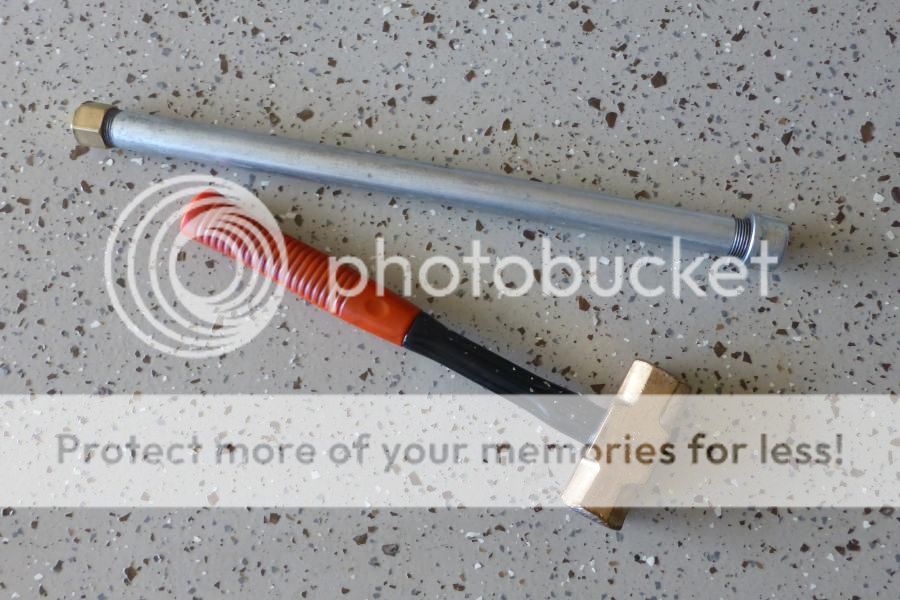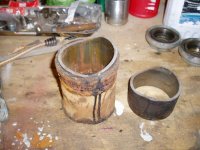I have driven them out with the piston and rod attached, using a "drift" very similar to what Geo showed above (except I think mine was shorter) and a BFH. The main point of the brass cap is to avoid chipping the end of the liner, in case it can be reused. It doesn't work 100% of the time, but almost always.
Doing it with the engine in the car is not especially recommended (nor pleasant), but can be done. I definitely recommend eye protection, because of all the cooling system rust and crud that will come raining down on your face as the liner comes free of it's seat. In fact, I did my first TR3A "rebuild" that way some 40 years ago, and that engine still ran the last time anyone tried it.
However, you might want to first try shooting some PB Blaster or SiliKroil around the top of the piston, and driving the piston down with a block of wood & BFH (after making sure the rod can't ding the crank). Keep soaking and pounding for several days. It's a lot easier to get the piston out with the engine block to hold the liner for you.
If all else fails, use a big cold chisel to break the piston crown and chisel away enough of it to get the rod out. Then use the chisel & BFH to break the liner. It won't matter if you get some nicks and dings in the vertical area where the liner sits in the block, the critical surface is the horizontal part where the "Figure 8" gaskets sit. Just don't crack the block


 Hi Guest!
Hi Guest!

 smilie in place of the real @
smilie in place of the real @
 Pretty Please - add it to our Events forum(s) and add to the calendar! >>
Pretty Please - add it to our Events forum(s) and add to the calendar! >> 



